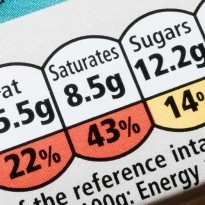Five Labelling Laws You Need To Be Aware Of
Posted on 23/10/2017 in Company News, by Jon

Whether you’re a food and drink manufacturer or a furniture maker, adhering to the correct labelling standards is essential. Incorrect labelling can lead to legal issues and safety concerns. From fire safety labels on furniture to allergen labelling on food products, this guide outlines the key labelling laws you must comply with.
1. Fire Safety Labels on Furniture
What It Is:
Furniture sold in the UK must meet certain fire safety standards, and this is communicated through fire safety labels.
Legal Requirements:
- Two Labels Required: Furniture must feature two types of labels: display and permanent.
- Display Labels: Indicate the ignition resistance of the furniture and must be attached to all new furniture at the point of sale, except for items like mattresses, bed-bases, pillows, and cushions.
- Permanent Labels: These are used to assist enforcement officers and confirm compliance with fire safety regulations concerning the materials used in the product.
Key Points:
- Display labels must be placed prominently on each item of furniture, especially for sets like a three-piece suite.
- Permanent labels should be included on all furniture, except mattresses and bed bases.
- Current Regulation: The Furniture and Furnishings (Fire) (Safety) Regulations 1988 still apply in the UK, ensuring products are flame-resistant.
Example:
A three-piece sofa set might include fire safety labels indicating that the material used complies with UK fire safety regulations.
2. Allergen Food Safety Labels
What It Is:
Accurate allergen labelling is crucial for protecting people with allergies from dangerous reactions to foods.
Legal Requirements:
Under the EU Food Information for Consumers Regulation (EU FIC) and the UK Food Information Regulations (post-Brexit), manufacturers must list all ingredients, highlighting allergens such as peanuts, dairy, gluten, and shellfish.
Allergen Labelling:
- Mandatory: Clear identification of allergens within the ingredient list.
- Voluntary ‘May Contain’ Statements: While not required by law, many manufacturers include “may contain traces of” statements to warn consumers of possible cross-contamination during manufacturing. This helps customers make safer choices, even if it’s not legally required.
Example:
A chocolate bar may include a label reading:
“Contains Milk, Nuts, and Gluten. May contain traces of soy.”
3. Do Not Mislead on Your Labelling
What It Is:
Your product’s label must be clear and truthful, reflecting its actual content, quality, and intended use.
Legal Requirements:
- No Misleading Information: The label must not give a false impression about the quantity, price, composition, or origin of the product.
- Special Rules for Certain Products: There are particular requirements for different categories of goods. For example, food labels must not mislead customers about the origin or content of the food.
Example:
A bottled water label cannot claim “100% pure” unless it meets the quality standards to substantiate that claim. Misleading claims, such as falsely advertising a product as “organic” when it’s not, can lead to penalties.
4. Using the CE Mark
What It Is:
The CE mark is a declaration by the manufacturer that the product complies with relevant EU regulations regarding safety, health, and environmental protection.
Legal Requirements:
- Certain products must display the CE mark before they can be sold within the EU or European Economic Area (EEA).
- Products Requiring CE Marking: Includes toys, medical devices, gas appliances, electrical products, and more.
- Manufacturer’s Responsibility: It is the manufacturer’s responsibility to ensure their product meets the safety requirements before placing the CE mark on it. Non-compliance can result in legal action.
Example:
A children’s toy sold in the UK must bear the CE mark, indicating that it meets EU safety standards for child safety.
5. Units of Measurement on Labels
What It Is:
Labels must use metric units for measurements such as weight, volume, and dimensions.
Legal Requirements:
-
Metric Only: In the UK (and EU), labels must use metric units (grams, kilograms, millilitres, litres) for all packaged or loose goods.
-
Exceptions for Imperial Units: Some items can use imperial units, such as:
- Draught beer or cider (pints)
- Milk in returnable containers (pints)
- Precious metals (troy ounces)
-
Dual Measurements: While imperial measurements can appear alongside metric, the metric measurement must be more prominent.
Example:
A packet of crisps might list the weight as:
“Net Weight: 150g (5.3 oz)”
The metric weight is more prominent and easier to read.
Conclusion: Stay Compliant and Informed
Understanding and adhering to product labelling laws is critical for the safety of consumers and the legality of your business operations. While some labels are mandatory (such as allergen warnings or fire safety), others help ensure customer confidence, like truthful product descriptions and clear measurement units.
If you’re unsure about the labelling laws for your products, or if you need assistance designing labels that meet legal standards, we’re here to help! Get in touch with our team today to ensure your labels are both legally compliant and consumer-friendly.
Additional Tips:
- Regularly check for updates in the law, especially after Brexit, as some food and product labelling requirements have shifted.
- Ensure your labels are easy to read, accurate, and offer clear instructions for use, safety, and handling.
- Professional Help: For complex regulations, such as CE marking or allergen declarations, consider consulting with a legal expert or labelling specialist such as Soabar, to ensure full compliance.

